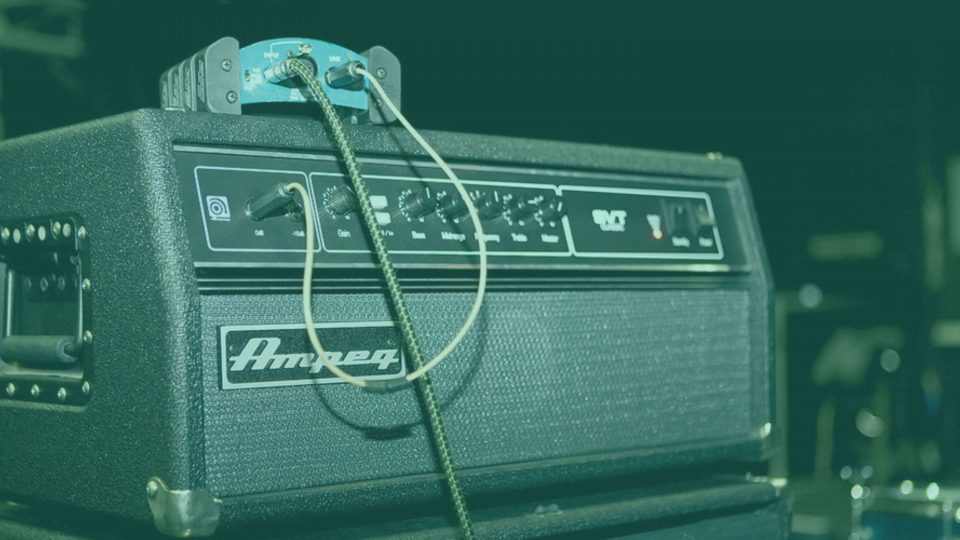DI Boxes for Beginners: What Are They and When to Use Them
Created to accommodate the electric instruments being born in the 1960s, DI (Direct Injection) boxes convert unbalanced high impedance signals into balanced low impedance signals. This allows us to route unbalanced signals such as a guitar to mic preamps and improve the signal to noise ratio. It also allows you to run longer cables from the output of the DI box with no noise floor.
DI boxes also reduce strong instrument and/or line signals down to levels that a mixing desk mic input can receive.
In a live scenario, DI boxes are capable of isolating electronic equipment from the live mixing console. This helps reduce or eliminate interference and noise that electrical equipment and signals are all too good at doing when interacting with other electrical equipment and signals.
Not only this but a DI box also blocks any phantom power sent from a mixing desk which stops the phantom power from interacting with any gear that’s connected to the DI box.
DI Box: Passive vs Active
Passive DI boxes feature a single, high quality, transformer that handles the conversion of unbalanced to balanced and vice versa. The transformer must be high quality if you wish to preserve all volume and frequency content in the signal!
Usually, the input connection is an unbalanced 1/4” guitar TS (tip, sleeve) jack or an RCA phono jack. There are always two jacks wired in parallel to one another (two TS or two RCA jacks) so we can route an instrument signal through the DI and then out in parallel.
You could use a passive DI in your guitar setup. We can feed the instrument signal from the guitar into the DI and then out to your guitar amplifier.
The biggest difference between an active DI and a passive DI is that an active DI includes a preamplifier.
The very same conversion in a passive DI box occurs in an active DI box. But one advantage of using an active DI is the ability to fine-tune and produce a wider frequency response that a passive DI can’t accomplish.
In the same way that active speakers do, active DIs need a power source. Phantom power from your mixing desk or batteries (if applicable) should do the trick.
Common Features of A DI Box
Multiple Channels
As well as single-channel units, multiple channel DI boxes are also very popular.
For your home studio, a DI box with two input channels for your guitar and keyboard or any other instrument mix you may have is perfect. There are even DI boxes that are rack-mountable with eight channels, but these are most often sued in live performances.
Thru/Bypass
Thru, which is short for throughput, splits the instrument input signal into a second output. This second output can be sent directly to an amplifier and monitored by the instrument player directly.
Throughput is very useful in live scenarios as it allows a bassist, for example, to monitor their instrument before any external processing has taken place. This reduces on-stage noise which allows for more efficient monitoring. What a lovely feedback loop that is!
Ground Lift
DI boxes can reduce or eliminate external noise that usually plagues unbalanced instrument signals, but even balanced audio equipment can fall victim to those dreaded hums and buzzes that ground loops are responsible for.
A switchable ground lift allows you to disconnect Pin 1 on the XLR input of the DI box which stops current from flowing between your DI box and microphone preamplifier. This eliminates the unwanted noise!
Pad
A pad is a switchable attenuator that prevents excessive gain from overloading the circuitry of the DI or other gear.
By decreasing the input signal by a fixed amount, which is usually -15dB and -20dB, this feature accommodates for high output levels of active pickups and unbalanced line equipment like keyboards.
Polarity Reverse
Polarity reverse changes the XLR cable configuration from a standard Pin 2 hot to Pin 3 hot.
This allows us to correct wrongly wired XLR cables, as well as align the absolute polarity of a direct signal with the polarity of a microphone on the same input source.
Polarity reverse can also help prevent feedback, and it’s a handy feature to have in case the mixer channel isn’t equipped with a polarity reverse.
Do you need some drum samples to accompany your guitar riff? Maybe you don’t even play the guitar? Have you got some killers vocals in your music yet?
Mixxed has thousands of samples for you to choose from ranging from vocals and guitars to drums and 808’s. We’ve got one-shots and loops to fulfil any need and quench any musical thirst you may have for less than $3 a month.
Sign up today to give your listeners the ultimate music experience!
